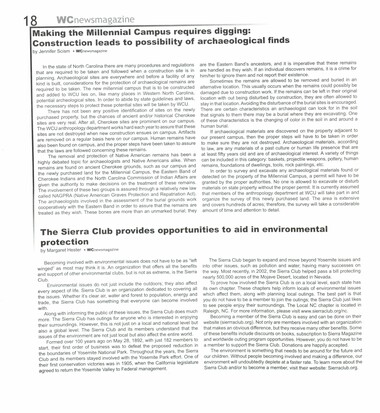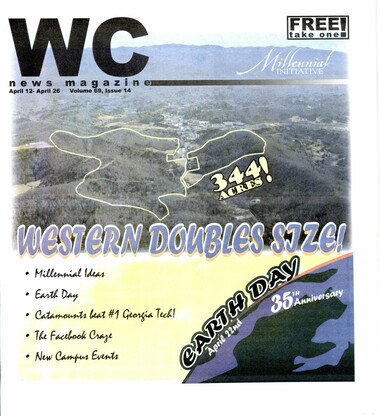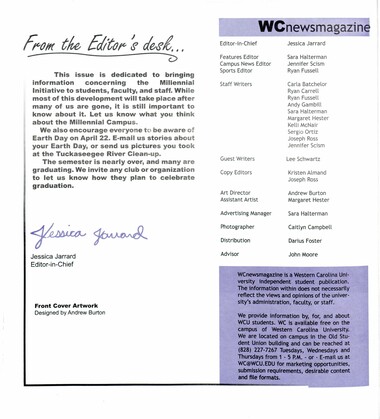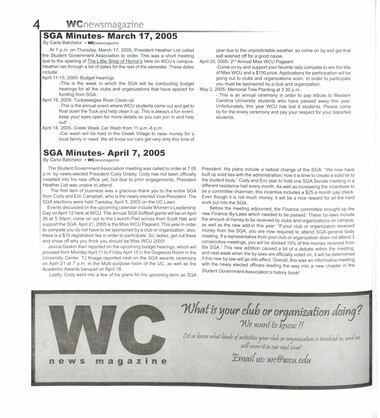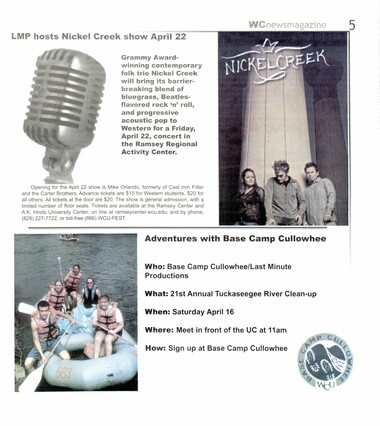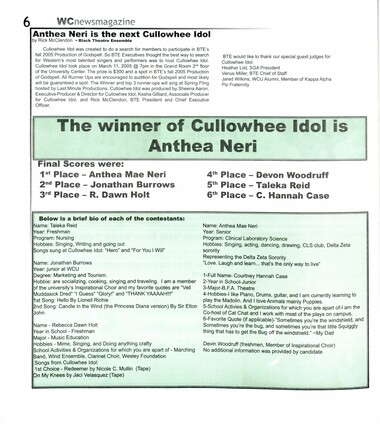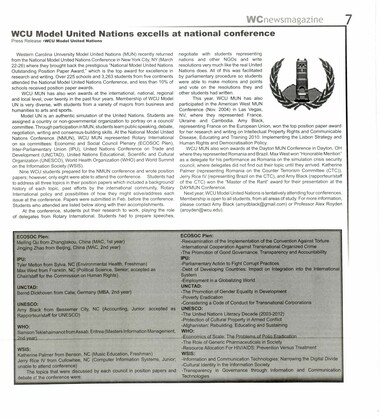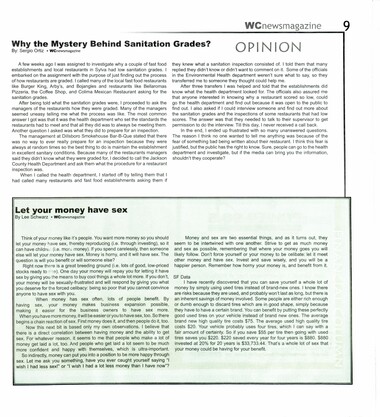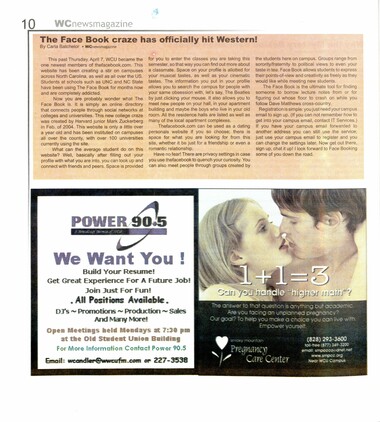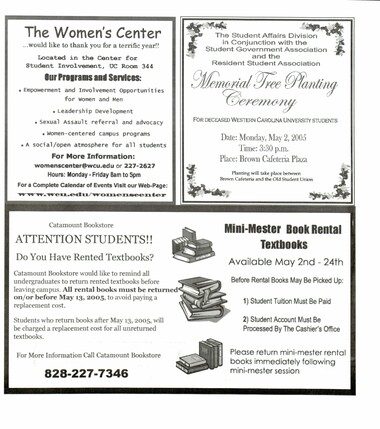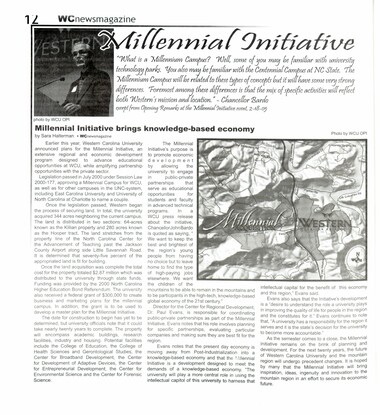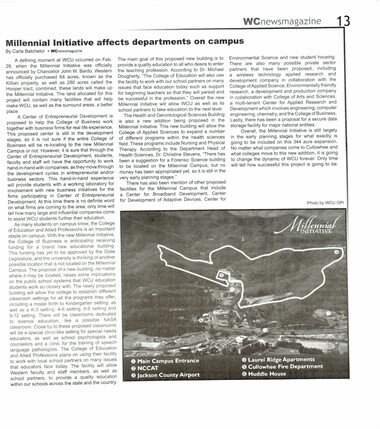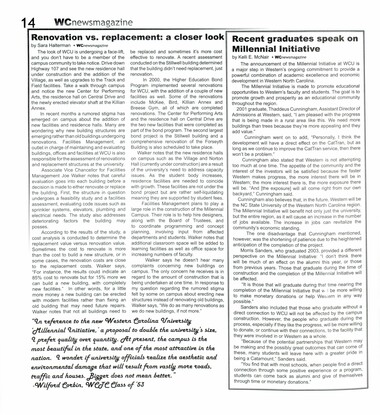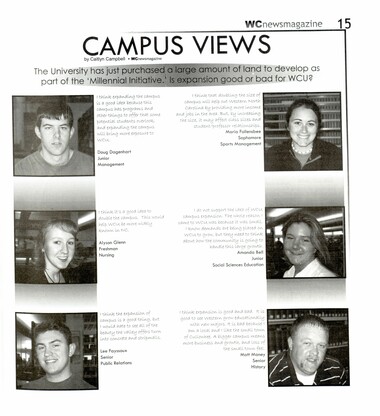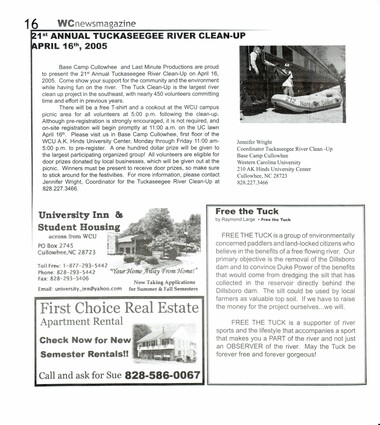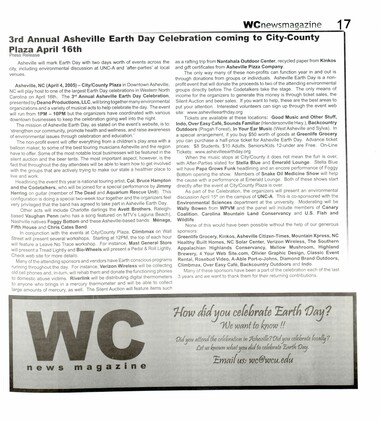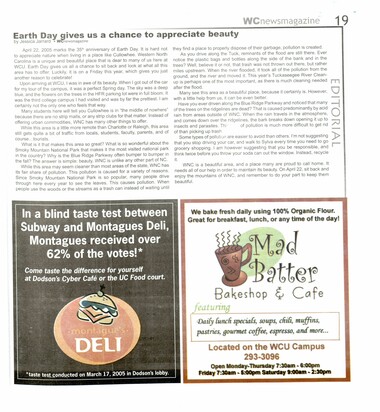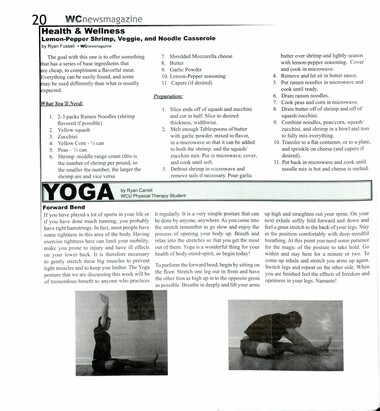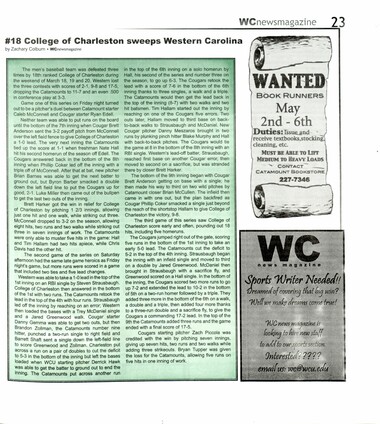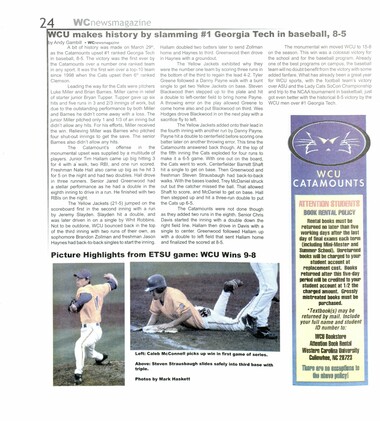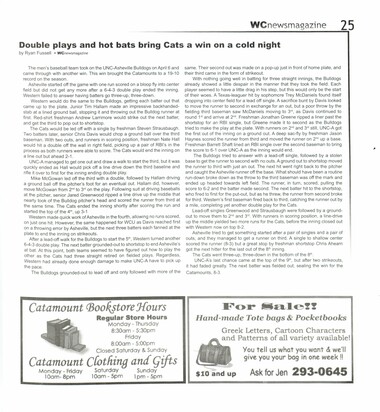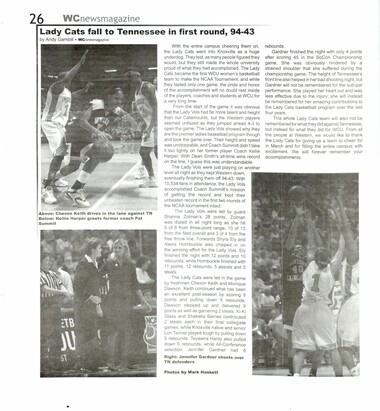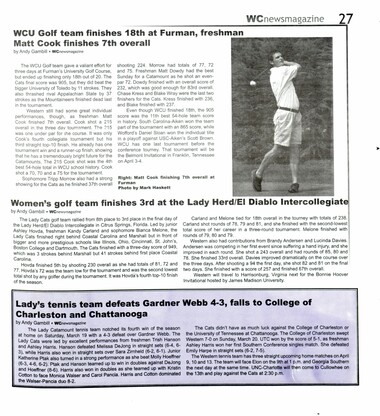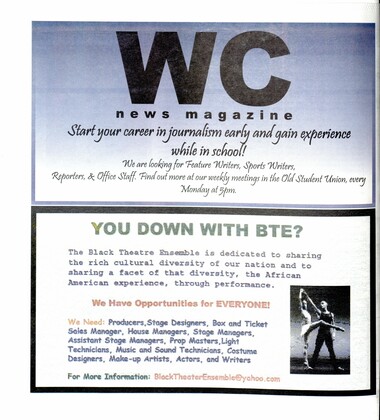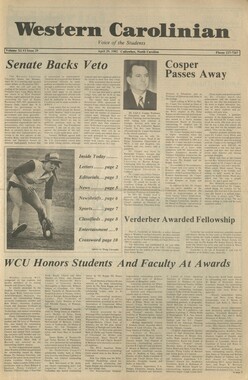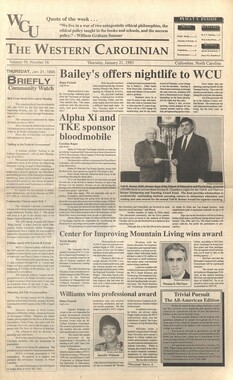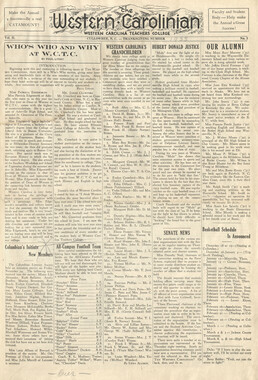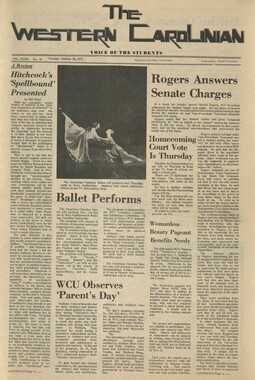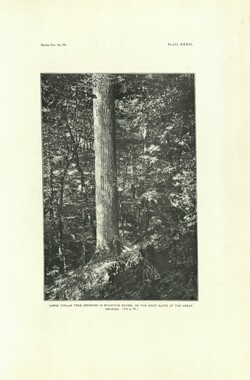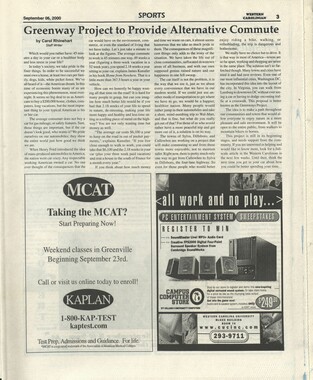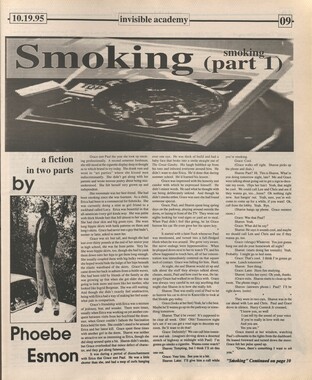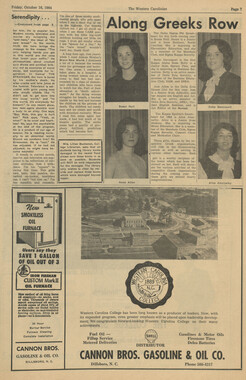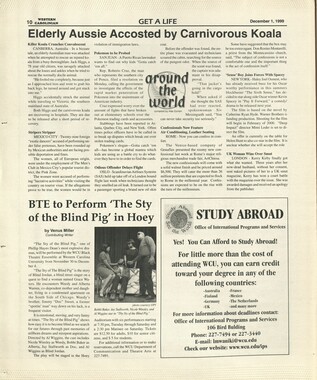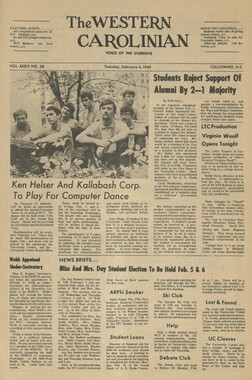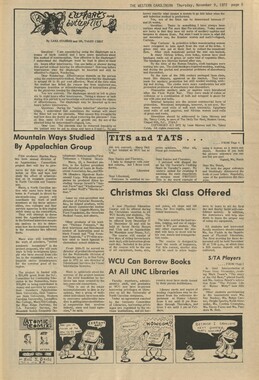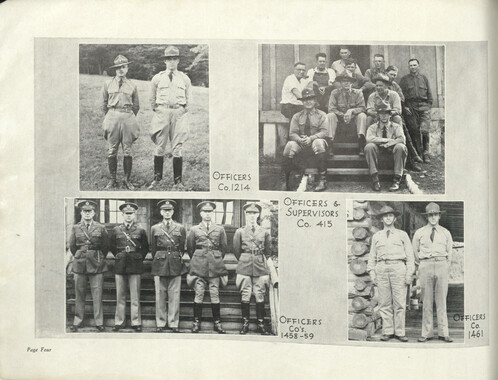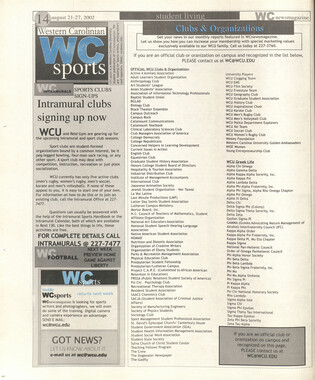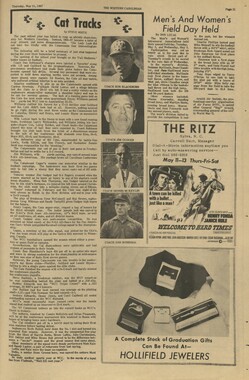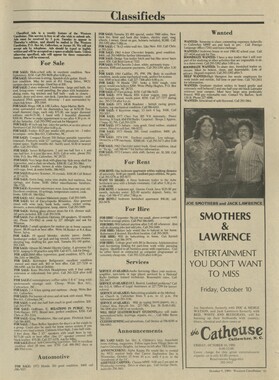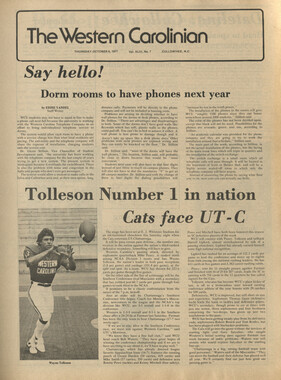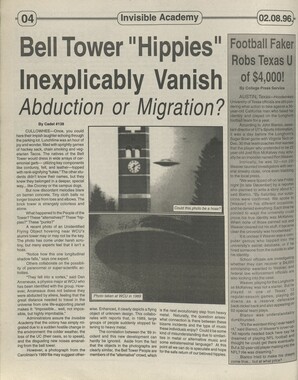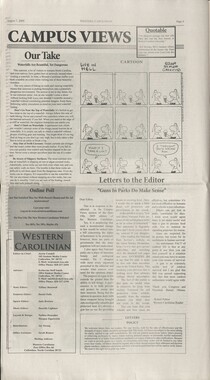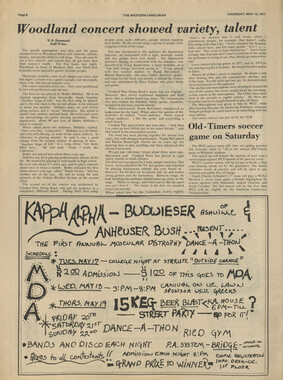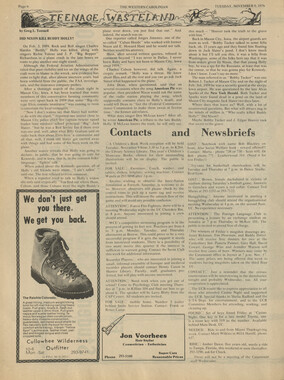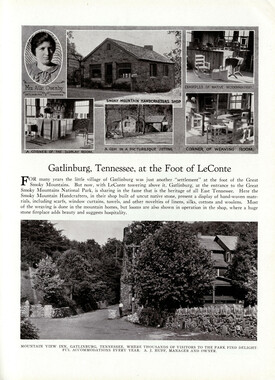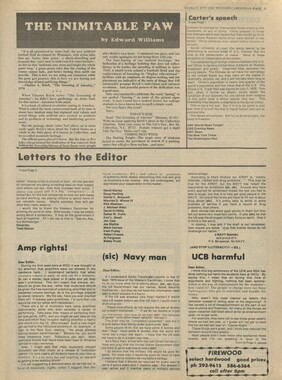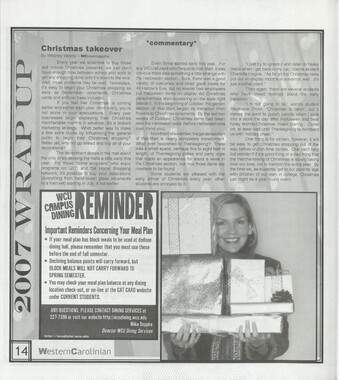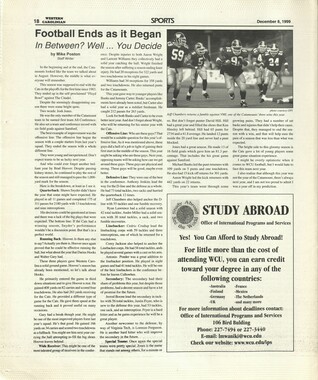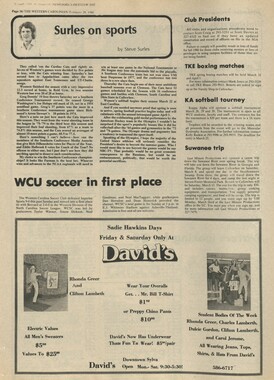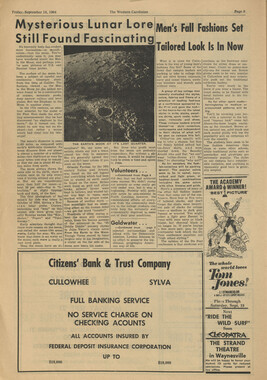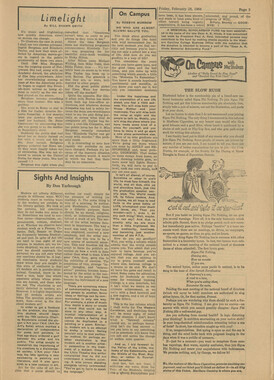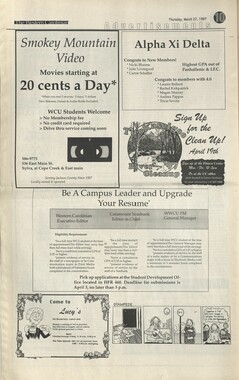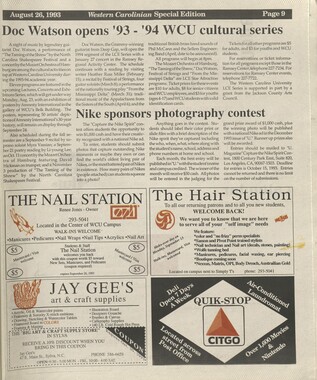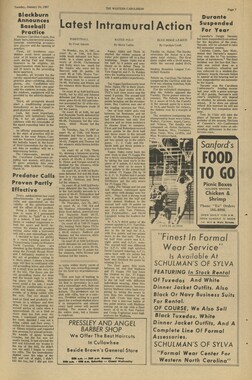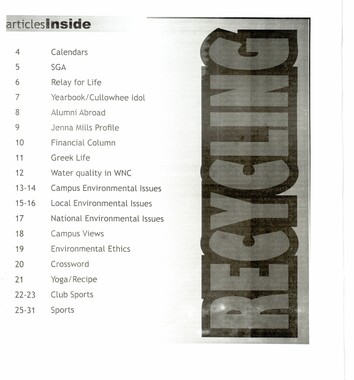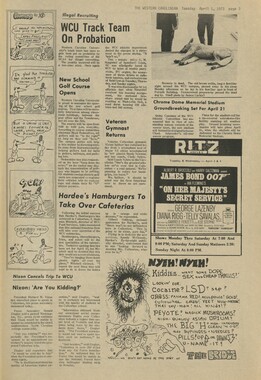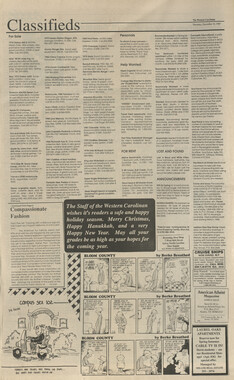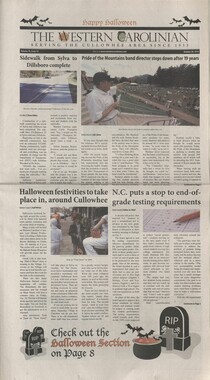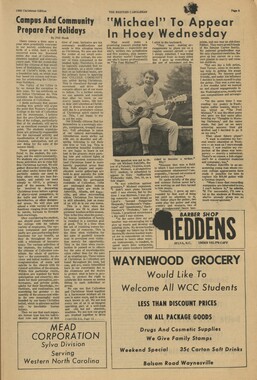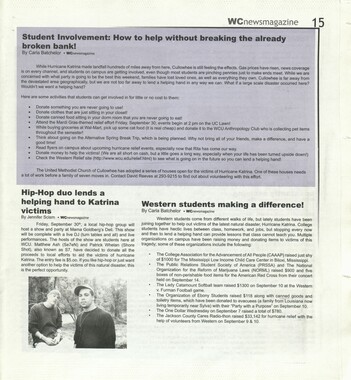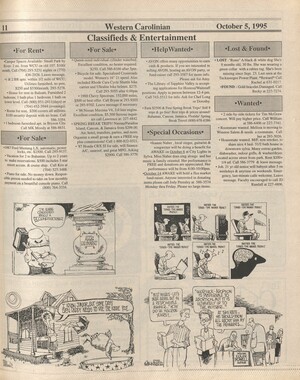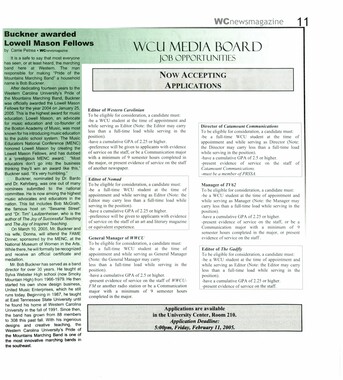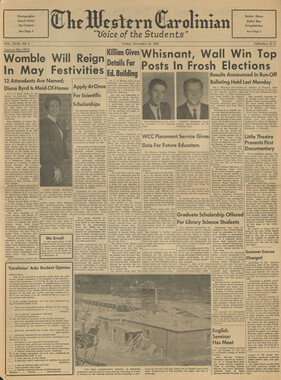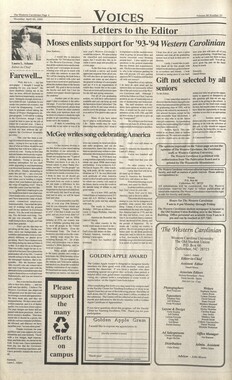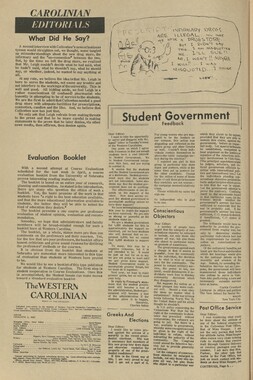Western Carolina University (20)
View all
- Canton Champion Fibre Company (2308)
- Cherokee Traditions (291)
- Civil War in Southern Appalachia (165)
- Craft Revival (1942)
- Great Smoky Mountains - A Park for America (2946)
- Highlights from Western Carolina University (430)
- Horace Kephart (941)
- Journeys Through Jackson (159)
- LGBTQIA+ Archive of Jackson County (85)
- Oral Histories of Western North Carolina (314)
- Picturing Appalachia (6873)
- Stories of Mountain Folk (413)
- Travel Western North Carolina (160)
- Western Carolina University Fine Art Museum Vitreograph Collection (129)
- Western Carolina University Herbarium (92)
- Western Carolina University: Making Memories (738)
- Western Carolina University Publications (2491)
- Western Carolina University Restricted Electronic Theses and Dissertations (146)
- Western North Carolina Regional Maps (71)
- World War II in Southern Appalachia (131)
University of North Carolina Asheville (6)
View all
- Allanstand Cottage Industries (62)
- Appalachian National Park Association (53)
- Bennett, Kelly, 1890-1974 (1463)
- Berry, Walter (76)
- Brasstown Carvers (40)
- Carver, George Washington, 1864?-1943 (26)
- Cathey, Joseph, 1803-1874 (1)
- Champion Fibre Company (233)
- Champion Paper and Fibre Company (297)
- Cherokee Indian Fair Association (16)
- Cherokee Language Program (22)
- Crowe, Amanda (40)
- Edmonston, Thomas Benton, 1842-1907 (7)
- Ensley, A. L. (Abraham Lincoln), 1865-1948 (275)
- Fromer, Irving Rhodes, 1913-1994 (70)
- George Butz (BFS 1907) (46)
- Goodrich, Frances Louisa (120)
- Grant, George Alexander, 1891-1964 (96)
- Heard, Marian Gladys (60)
- Kephart, Calvin, 1883-1969 (15)
- Kephart, Horace, 1862-1931 (313)
- Kephart, Laura, 1862-1954 (39)
- Laney, Gideon Thomas, 1889-1976 (439)
- Masa, George, 1881-1933 (61)
- McElhinney, William Julian, 1896-1953 (44)
- Niggli, Josephina, 1910-1983 (10)
- North Carolina Park Commission (105)
- Osborne, Kezia Stradley (9)
- Owens, Samuel Robert, 1918-1995 (11)
- Penland Weavers and Potters (36)
- Roberts, Vivienne (15)
- Roth, Albert, 1890-1974 (142)
- Schenck, Carl Alwin, 1868-1955 (1)
- Sherrill's Photography Studio (2565)
- Southern Highland Handicraft Guild (127)
- Southern Highlanders, Inc. (71)
- Stalcup, Jesse Bryson (46)
- Stearns, I. K. (213)
- Thompson, James Edward, 1880-1976 (226)
- United States. Indian Arts and Crafts Board (130)
- USFS (683)
- Vance, Zebulon Baird, 1830-1894 (1)
- Weaver, Zebulon, 1872-1948 (58)
- Western Carolina College (230)
- Western Carolina Teachers College (282)
- Western Carolina University (2008)
- Western Carolina University. Mountain Heritage Center (18)
- Whitman, Walt, 1819-1892 (10)
- Wilburn, Hiram Coleman, 1880-1967 (73)
- Williams, Isadora (3)
- Cain, Doreyl Ammons (0)
- Crittenden, Lorraine (0)
- Rhodes, Judy (0)
- Smith, Edward Clark (0)
- Appalachian Region, Southern (2569)
- Asheville (N.C.) (1923)
- Avery County (N.C.) (26)
- Blount County (Tenn.) (195)
- Buncombe County (N.C.) (1672)
- Cherokee County (N.C.) (283)
- Clay County (N.C.) (555)
- Graham County (N.C.) (236)
- Great Smoky Mountains National Park (N.C. and Tenn.) (519)
- Haywood County (N.C.) (3569)
- Henderson County (N.C.) (70)
- Jackson County (N.C.) (4912)
- Knox County (Tenn.) (35)
- Knoxville (Tenn.) (13)
- Lake Santeetlah (N.C.) (10)
- Macon County (N.C.) (420)
- Madison County (N.C.) (215)
- McDowell County (N.C.) (39)
- Mitchell County (N.C.) (132)
- Polk County (N.C.) (35)
- Qualla Boundary (982)
- Rutherford County (N.C.) (76)
- Swain County (N.C.) (2182)
- Transylvania County (N.C.) (270)
- Watauga County (N.C.) (12)
- Waynesville (N.C.) (86)
- Yancey County (N.C.) (72)
- Aerial Photographs (3)
- Aerial Views (60)
- Albums (books) (4)
- Articles (1)
- Artifacts (object Genre) (228)
- Bibliographies (1)
- Biography (general Genre) (2)
- Cards (information Artifacts) (38)
- Clippings (information Artifacts) (191)
- Copybooks (instructional Materials) (3)
- Crafts (art Genres) (622)
- Depictions (visual Works) (21)
- Design Drawings (1)
- Drawings (visual Works) (185)
- Envelopes (73)
- Exhibitions (events) (1)
- Facsimiles (reproductions) (1)
- Fiction (general Genre) (4)
- Financial Records (12)
- Fliers (printed Matter) (67)
- Glass Plate Negatives (381)
- Guidebooks (2)
- Internegatives (10)
- Interviews (815)
- Land Surveys (102)
- Letters (correspondence) (1013)
- Manuscripts (documents) (618)
- Maps (documents) (177)
- Memorandums (25)
- Minutes (administrative Records) (59)
- Negatives (photographs) (6090)
- Newsletters (1290)
- Newspapers (2)
- Notebooks (8)
- Occupation Currency (1)
- Paintings (visual Works) (1)
- Pen And Ink Drawings (1)
- Periodicals (193)
- Personal Narratives (10)
- Photographs (12976)
- Plans (maps) (1)
- Poetry (5)
- Portraits (4568)
- Postcards (329)
- Programs (documents) (181)
- Publications (documents) (2443)
- Questionnaires (65)
- Relief Prints (26)
- Sayings (literary Genre) (1)
- Scrapbooks (282)
- Sheet Music (2)
- Slides (photographs) (402)
- Songs (musical Compositions) (2)
- Sound Recordings (796)
- Specimens (92)
- Speeches (documents) (18)
- Tintypes (photographs) (8)
- Transcripts (322)
- Video Recordings (physical Artifacts) (23)
- Text Messages (0)
- A.L. Ensley Collection (275)
- Appalachian Industrial School Records (7)
- Appalachian National Park Association Records (336)
- Axley-Meroney Collection (2)
- Bayard Wootten Photograph Collection (20)
- Bethel Rural Community Organization Collection (7)
- Blumer Collection (5)
- C.W. Slagle Collection (20)
- Canton Area Historical Museum (2110)
- Carlos C. Campbell Collection (462)
- Cataloochee History Project (64)
- Cherokee Studies Collection (4)
- Daisy Dame Photograph Album (5)
- Daniel Boone VI Collection (1)
- Doris Ulmann Photograph Collection (112)
- Elizabeth H. Lasley Collection (1)
- Elizabeth Woolworth Szold Fleharty Collection (4)
- Frank Fry Collection (95)
- George Masa Collection (173)
- Gideon Laney Collection (452)
- Hazel Scarborough Collection (2)
- Hiram C. Wilburn Papers (28)
- Historic Photographs Collection (236)
- Horace Kephart Collection (861)
- Humbard Collection (33)
- Hunter and Weaver Families Collection (1)
- I. D. Blumenthal Collection (4)
- Isadora Williams Collection (4)
- Jesse Bryson Stalcup Collection (47)
- Jim Thompson Collection (224)
- John B. Battle Collection (7)
- John C. Campbell Folk School Records (80)
- John Parris Collection (6)
- Judaculla Rock project (2)
- Kelly Bennett Collection (1482)
- Love Family Papers (11)
- Major Wiley Parris Civil War Letters (3)
- Map Collection (12)
- McFee-Misemer Civil War Letters (34)
- Mountain Heritage Center Collection (4)
- Norburn - Robertson - Thomson Families Collection (44)
- Pauline Hood Collection (7)
- Pre-Guild Collection (2)
- Qualla Arts and Crafts Mutual Collection (12)
- R.A. Romanes Collection (681)
- Rosser H. Taylor Collection (1)
- Samuel Robert Owens Collection (94)
- Sara Madison Collection (144)
- Sherrill Studio Photo Collection (2558)
- Smoky Mountains Hiking Club Collection (616)
- Stories of Mountain Folk - Radio Programs (374)
- The Reporter, Western Carolina University (510)
- Venoy and Elizabeth Reed Collection (16)
- WCU Gender and Sexuality Oral History Project (32)
- WCU Mountain Heritage Center Oral Histories (25)
- WCU Oral History Collection - Mountain People, Mountain Lives (71)
- WCU Students Newspapers Collection (1923)
- Western North Carolina Tomorrow Black Oral History Project (69)
- William Williams Stringfield Collection (2)
- Zebulon Weaver Collection (109)
- African Americans (390)
- Appalachian Trail (35)
- Artisans (521)
- Cherokee art (84)
- Cherokee artists -- North Carolina (10)
- Cherokee language (21)
- Cherokee pottery (101)
- Cherokee women (208)
- Church buildings (189)
- Civilian Conservation Corps (U.S.) (111)
- College student newspapers and periodicals (2012)
- Dams (107)
- Dance (1023)
- Education (222)
- Floods (61)
- Folk music (1015)
- Forced removal, 1813-1903 (2)
- Forest conservation (220)
- Forests and forestry (1184)
- Gender nonconformity (4)
- Great Smoky Mountains National Park (N.C. and Tenn.) (181)
- Hunting (45)
- Landscape photography (25)
- Logging (119)
- Maps (83)
- Mines and mineral resources (8)
- North Carolina -- Maps (18)
- Paper industry (38)
- Postcards (255)
- Pottery (135)
- Railroad trains (72)
- Rural electrification -- North Carolina, Western (3)
- School integration -- Southern States (2)
- Segregation -- North Carolina, Western (5)
- Slavery (5)
- Sports (452)
- Storytelling (243)
- Waterfalls -- Great Smoky Mountains (N.C. and Tenn.) (66)
- Weaving -- Appalachian Region, Southern (280)
- Wood-carving -- Appalachian Region, Southern (328)
- World War, 1939-1945 (173)
Western Carolinian Volume 69 Number 14
Item
Item’s are ‘child’ level descriptions to ‘parent’ objects, (e.g. one page of a whole book).
-
-
18 snewsmagazine | Making the Millennial Campus requires digging: Construction leads to possibility of archaeological finds by Jennifer Scism * WCnewsmagazine In the state of North Carolina there are many procedures and regulations that are required to be taken and followed when a construction site is in planning. Archaeological sites are everywhere and before a facility of any kind is built, considerations for the protection of archaeological remains are required to be taken. The new millennial campus that is to be constructed and added to WCU lies on, like many places in Western North Carolina, potential archeological sites. In order to abide by state guidelines and laws, the necessary steps to protect these potential sites will be taken by WCU. There has not been any positive identification of sites on the newly purchased property, but the chances of ancient and/or historical Cherokee sites are very real. After all, Cherokee sites are prominent on our campus. The WCU anthropology department works hard each year to assure that these sites are not destroyed when new construction ensues on campus. Artifacts are removed on a regular basis here on our campus. Human remains have also been found on campus, and the proper steps have been taken to assure that the laws are followed concerning these remains. The removal and protection of Native American remains has been a highly debated topic for archaeologists and Native Americans alike. When remains are found on ancient Cherokee grounds, such as our campus and the newly purchased land for the Millennial Campus, the Eastern Band of Cherokee Indians and the North Carolina Commission of Indian Affairs are given the authority to make decisions on the treatment of these remains. The involvement of these two groups is assured through a relatively new law called NAGPRA (Native American Graves Protection and Repatriation Act). The archaeologists involved in the assessment of the burial grounds work cooperatively with the Eastern Band in order to assure that the remains are treated as they wish. These bones are more than an unmarked burial; they are the Eastern Bands ancestors, and it is imperative that these remains are handled as they wish. If an individual discovers remains, it is a crime for him/her to ignore them and not report their existence. Sometimes the remains are allowed to be removed and buried in an alternative location. This usually occurs when the remains could possibly be damaged due to construction work. If the remains can be left in their original location with out being disturbed by construction, they are often allowed to stay in that location. Avoiding the disturbance of the burial sites is encouraged. There are certain characteristics an archaeologist can look for in the soil that signals to them there may be a burial where they are excavating. One of these characteristics is the changing of color in the soil in and around a human burial. lf archaeological materials are discovered on the property adjacent to our present campus, then the proper steps will have to be taken in order to make sure they are not destroyed. Archaeological materials, according to law, are any materials of a past culture or human life presence that are at least fifty years old and are of archaeological interest. A variety of things can be included in this category: baskets, projectile weapons, pottery, human remains, foundations of dwellings, tools, rock paintings, etc. In order to survey and excavate any archaeological materials found or detected on the property of the Millennial Campus, a permit will have to be granted by the proper authorities. No one is allowed to excavate or disturb materials on state property without the proper permit. It is currently assumed that members of the anthropology department at WCU will take part in and organize the survey of this newly purchased land. The area is extensive and covers hundreds of acres; therefore, the survey will take a considerable amount of time and attention to detail. The Sierra Club provides opportunities to aid in environmental protection by Margaret Hester * WCnewsmagazine Becoming involved with environmental issues does not have to be as left winged as most may think it is. An organization that offers all the benefits and support of other environmental clubs, but is not as extreme, is the Sierra Club. Environmental issues do not just include the outdoors; they also affect every aspect of life. Sierra Club is an organization dedicated to covering all the issues. Whether its clear air, water and forest to population, energy and trade, the Sierra Club has something that everyone can become involved with. Along with informing the public of these issues, the Sierra Club does much more. The Sierra Club has outings for anyone who is interested in enjoying their surroundings. However, this is not just on a local and national level but also a global level. The Sierra Club and its members understand that the issues of the environment are not just local but also affect the entire world. Formed over 100 years ago on May 28, 1892, with just 182 members to start, their first order of business was to defeat the proposed reduction in the boundaries of Yosemite National Park. Throughout the years, the Sierra Club and its members stayed involved with the Yosemite Park effort. One of their first conservation victories was in 1905, when the California legislature agreed to return the Yosemite Valley to Federal management. The Sierra Club began to expand and move beyond Yosemite issues and into other issues, such as pollution and water, having many successes on the way. Most recently, in 2002, the Sierra Club helped pass a bill protecting nearly 500,000 acres of the Mojave Desert, located in Nevada. To prove how involved the Sierra Club is on a local level, each state has its own chapter. These chapters help inform locals of environmental issues which affect them, along with planning local outings. The best part is that you do not have to be a member to join the outings; the Sierra Club just likes to see people enjoy their surroundings. The Local NC chapter is located in Raleigh, NC. For more information, please visit www.sierraclub.org/nc. Becoming a member of the Sierra Club is easy and can be done on their website (sierrraclub.org). Not only are members involved with an organization that makes an obvious difference, but they receive many other benefits. Some of these benefits include discounts on books, subscription to Sierra Magazine and worldwide outing program opportunities. However, you do not have to be a member to support the Sierra Club. Donations are happily accepted. The environment is something that needs to be around for the future and our children. Without people becoming involved and making a difference, our environment will undoubtedly deplete at a faster rate. To learn more about the Sierra Club and/or to become a member, visit their website: Sierraclub.org.
Object
Object’s are ‘parent’ level descriptions to ‘children’ items, (e.g. a book with pages).
-
The Western Carolinian is Western Carolina University's student-run newspaper. The paper was published as the Cullowhee Yodel from 1924 to 1931 before changing its name to The Western Carolinian in 1933.
-
